
The Burgerim Franchise Horror Story: How Our AI Predicted the $57 Million Collapse
The American Dream can start with a single, brilliant idea. For 1,550 aspiring entrepreneurs, that idea was a gourmet mini-burger.
Burgerim, a flashy fast-casual concept, exploded onto the U.S. franchise scene between 2015 and 2019 with a promise that seemed tailor-made for success:
- A low initial investment,
- A trendy product, and
- A rapidly growing brand.
That promise, however, was an illusion.
By the end of 2019, Burgerim’s founder had fled the country, the company was insolvent, and its franchisees were left with shattered dreams and over $57 million in lost franchise fees.
The fallout was so severe it triggered a rare enforcement action from the Federal Trade Commission (FTC). But by then, the damage was already done.
How could a franchise system, registered with state regulators and scrutinized by franchise lawyers, collapse so spectacularly?
It turns out that the warnings were there, hidden in plain sight, within Burgerim’s own 240-page Franchise Disclosure Document (FDD).
We ran Burgerim’s 2019 FDD Package through our AI platform, and the results — available here — were chilling.
In minutes, our FDD Risk Report had cut through the legalese, flagging the precise structural flaws that foretold Burgerim’s implosion and guiding prospective franchisees toward advisors for professional advice.
The Real Business Was Selling Franchises, Not Burgers
The most powerful insight from our AI wasn't just a single red flag, but its ability to connect data points from across the FDD into a single, devastating conclusion. Our report flagged a High Severity risk revealing the business’s instability:
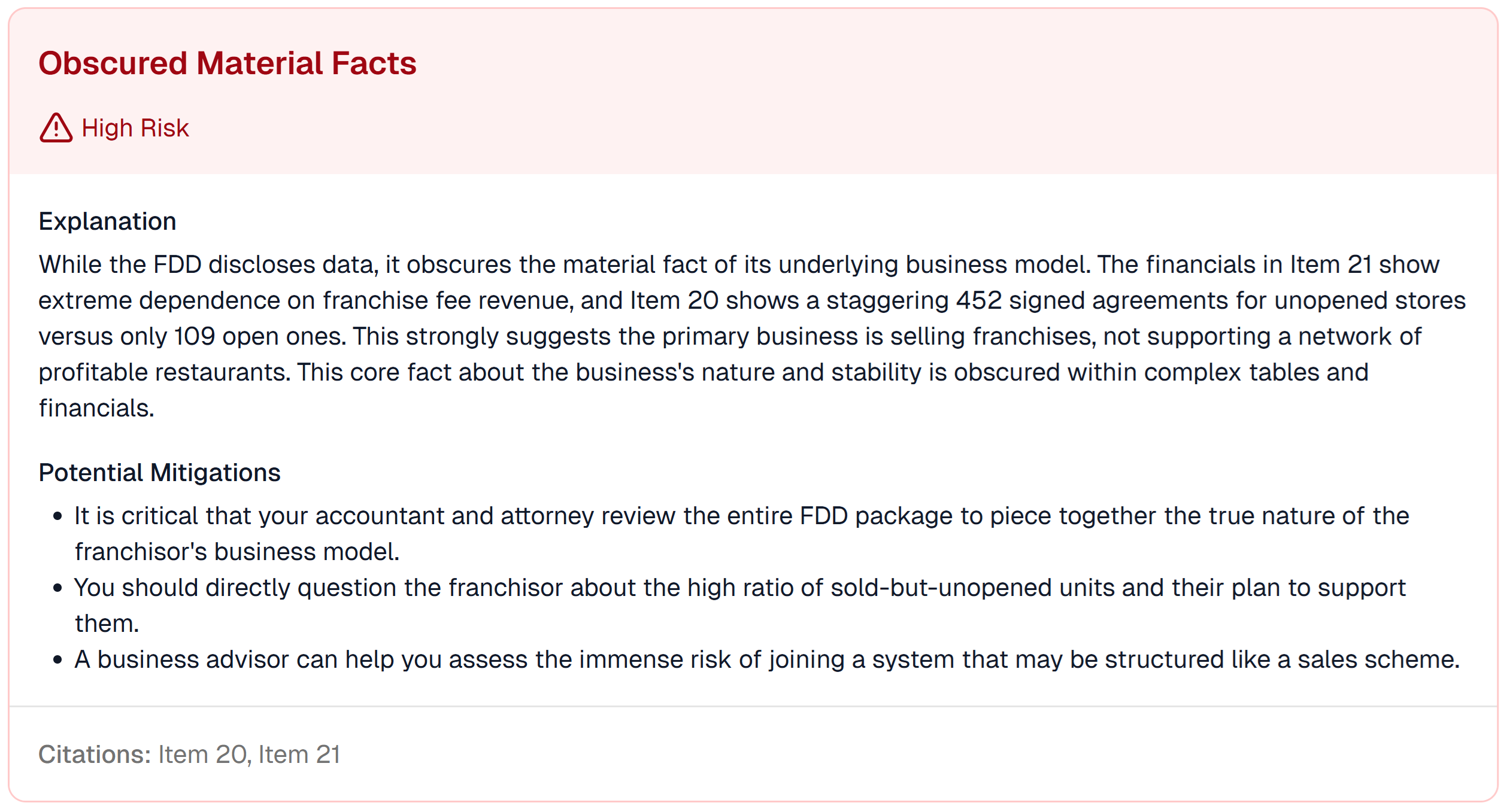
Explanation: While the FDD discloses data, it obscures the material fact of its underlying business model. The financials in Item 21 show extreme dependence on franchise fee revenue, and Item 20 shows a staggering 452 signed agreements for unopened stores versus only 109 open ones. This strongly suggests the primary business is selling franchises, not supporting a network of profitable restaurants.
Mitigation: It is critical that your accountant and attorney review the entire FDD package to piece together the true nature of the franchisor’s business model.
This single finding exposes a fatal misalignment of interests between the franchisor and franchisee. This insight alone, delivered with clear guidance, likely would have given pause to anyone considering a Burgerim investment in 2019.
Warning Signs Everywhere
The AI’s core conclusion was supported by a pattern of other High Severity risks scattered throughout the FDD. Our report connected the dots for the user:
A Recipe for Undercapitalization. Buried in the Item 7 investment table was an estimate for initial working capital of only $5,000 to $15,000 for a new restaurant—a dangerously insufficient amount:
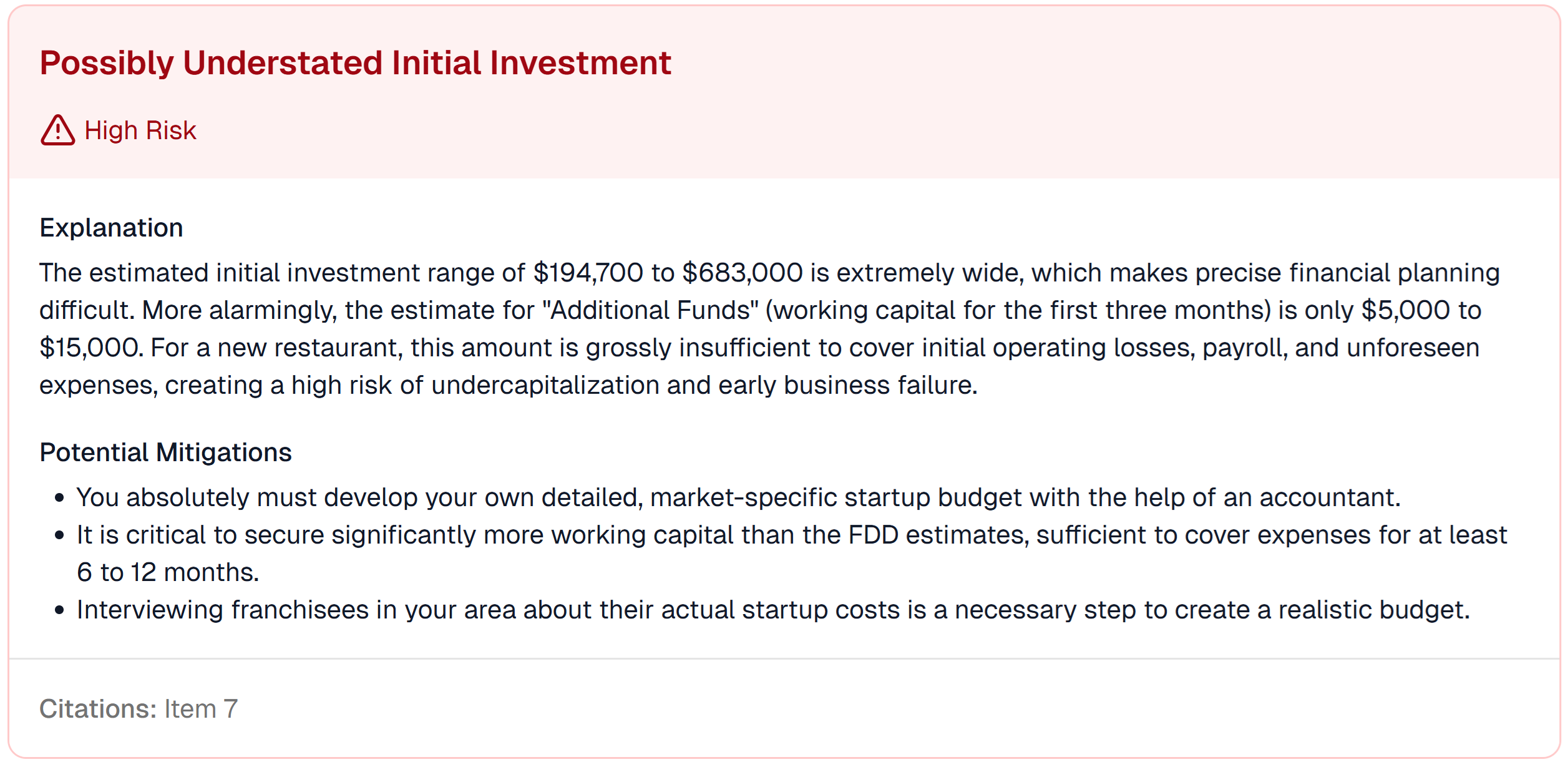
Explanation: More alarmingly, the estimate for "Additional Funds" (working capital for the first three months) is only $5,000 to $15,000. For a new restaurant, this amount is grossly insufficient to cover initial operating losses, payroll, and unforeseen expenses, creating a high risk of undercapitalization and early business failure.
Mitigation: You absolutely must develop your own detailed, market-specific startup budget with the help of an accountant.
Growth at an Impossible Speed. Our AI flagged a shocking ratio of 452 units sold but not yet open versus only 109 operating stores. This unsustainable pace is a classic red flag that a franchisor cannot possibly provide adequate support:
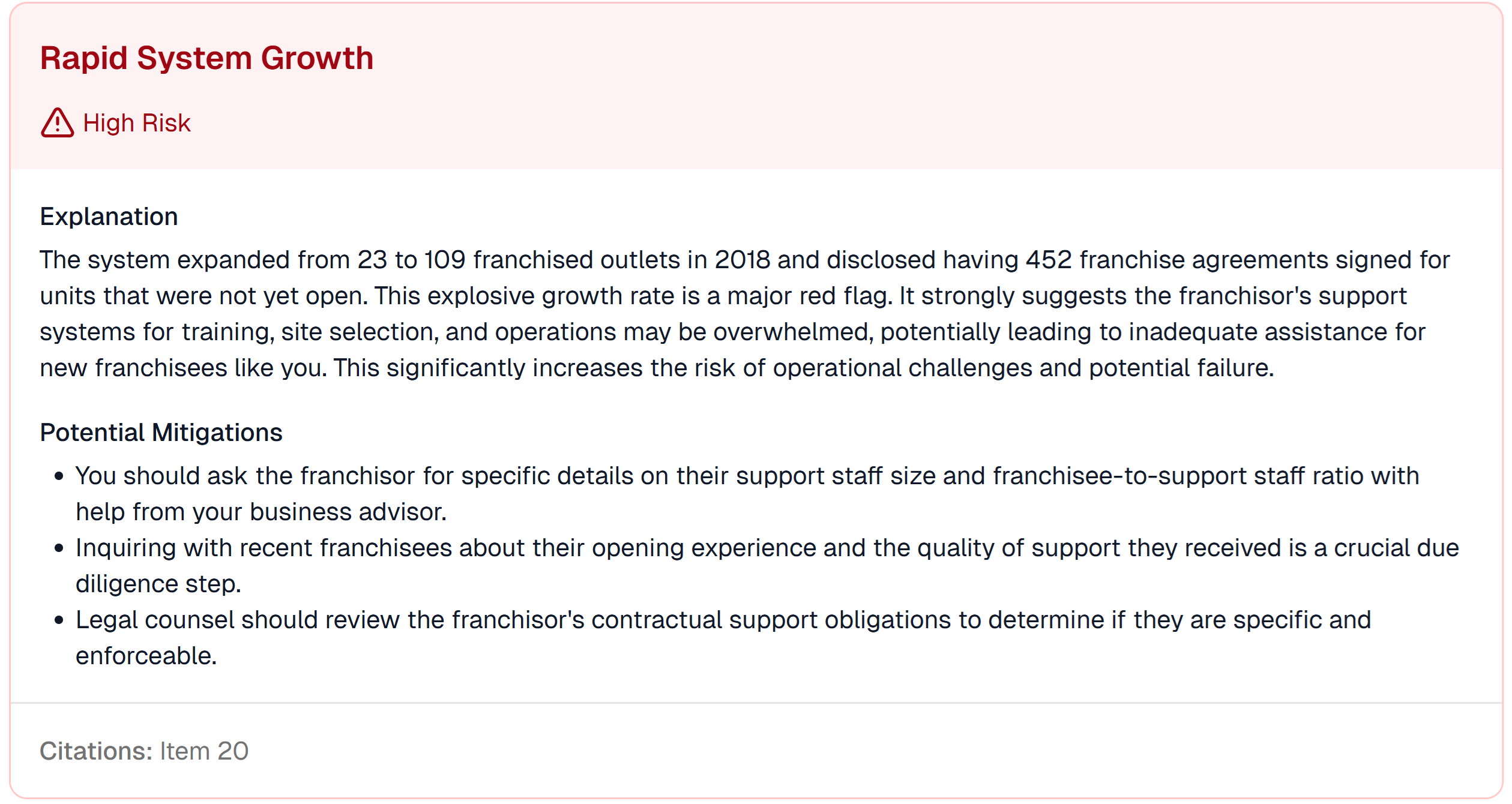
Explanation: This explosive growth rate is a major red flag. It strongly suggests the franchisor's support systems for training, site selection, and operations may be overwhelmed, potentially leading to inadequate assistance for new franchisees like you.
Mitigation: You should ask the franchisor for specific details on their support staff size and franchisee-to-support staff ratio with help from your business advisor.
Flying Blind with No Proof of Profit. Burgerim offered zero data in Item 19 to show how much a franchisee might earn:
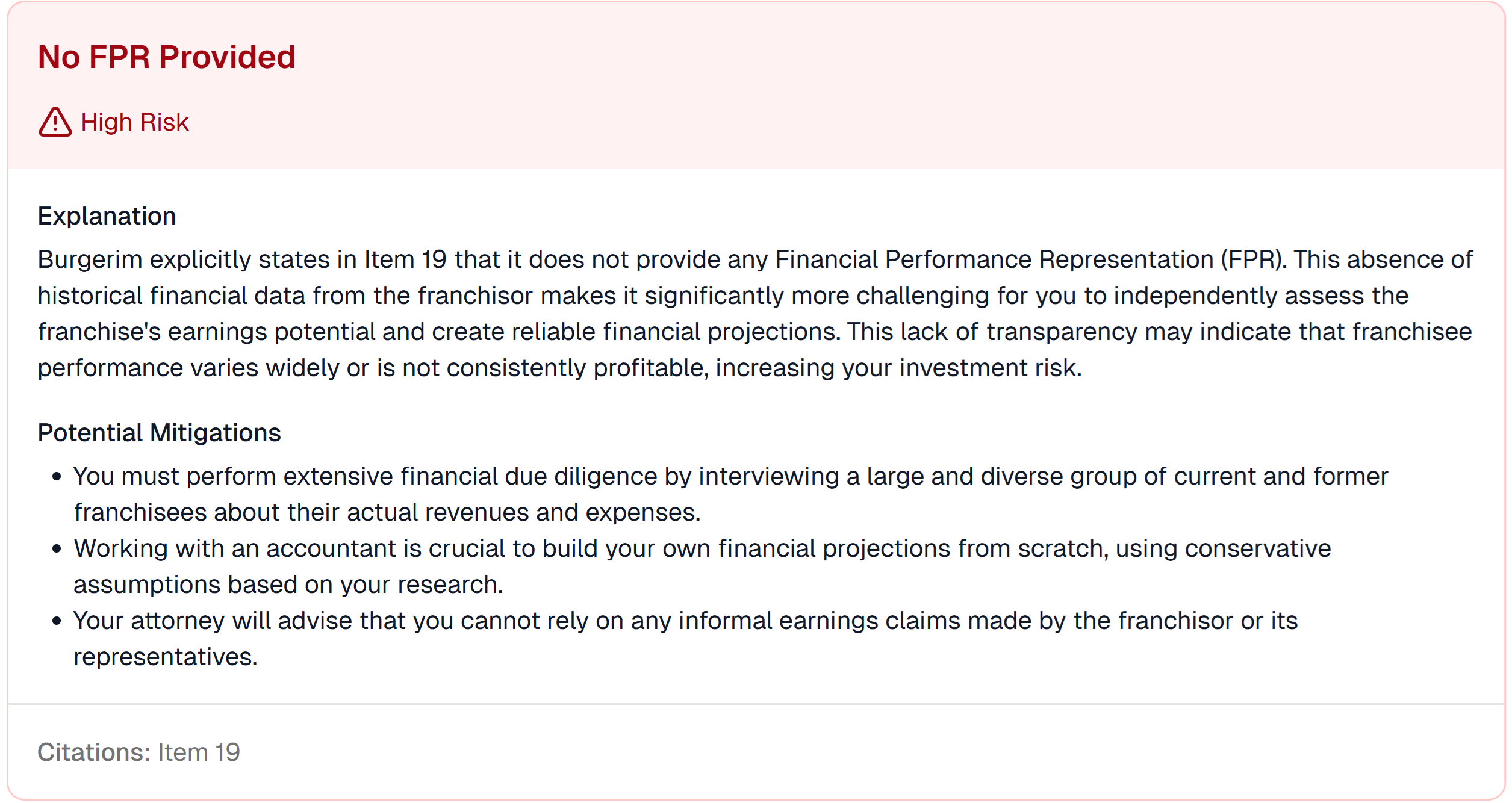
Explanation: This absence of historical financial data from the franchisor makes it significantly more challenging for you to independently assess the franchise's earnings potential and create reliable financial projections. This lack of transparency may indicate that franchisee performance varies widely or is not consistently profitable, increasing your investment risk.
Mitigation: Your attorney will advise that you cannot rely on any informal earnings claims made by the franchisor or its representatives.
Trapped in a One-Sided Deal
Beyond the flawed business model, the Franchise Agreement was a legal minefield. Our FDD Risk Report highlighted numerous one-sided terms, including a "Liability for Future Royalties" clause that could force owners of failed stores to keep paying fees for years:
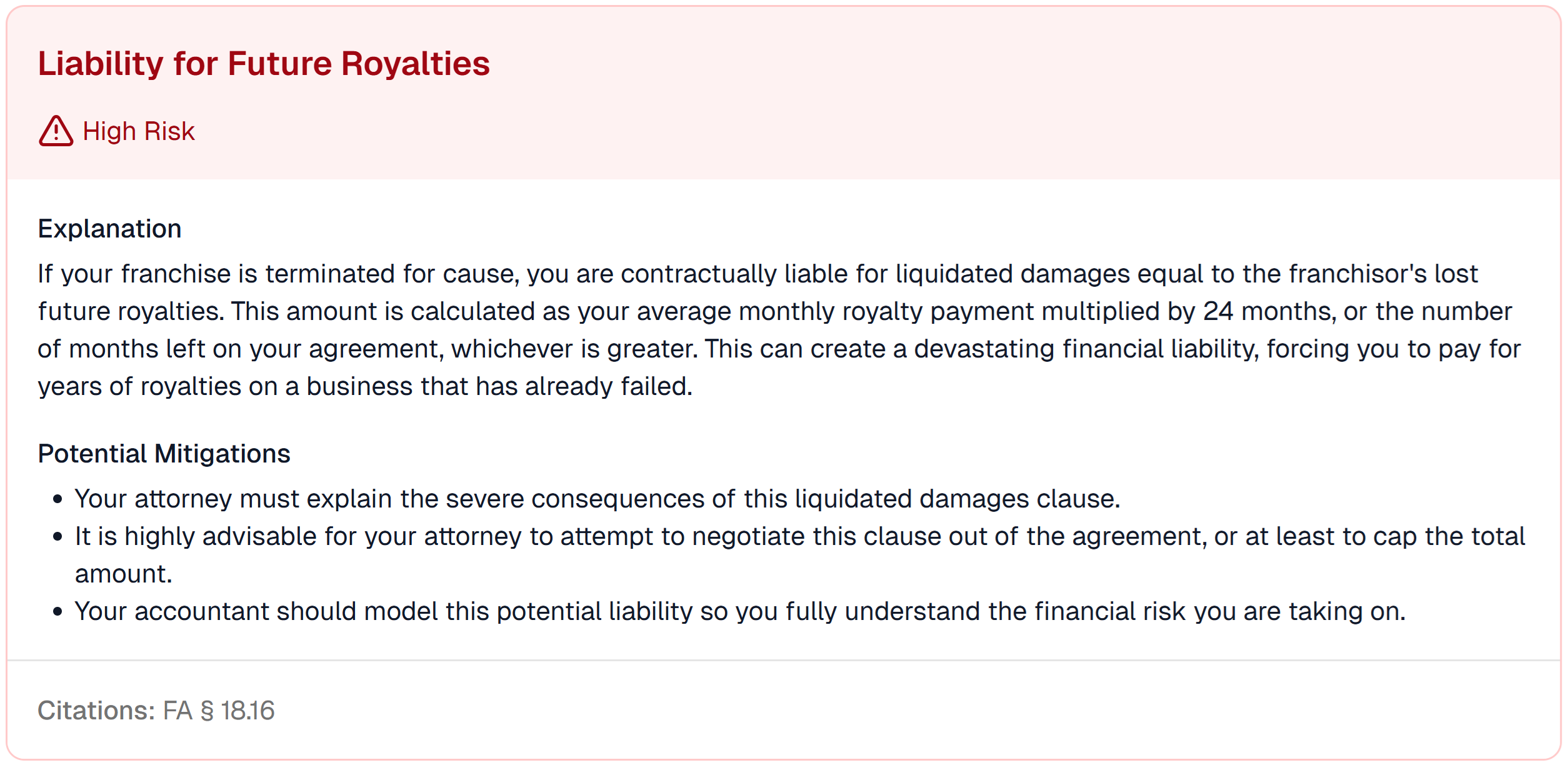
Explanation: If your franchise is terminated for cause, you are contractually liable for liquidated damages equal to the franchisor's lost future royalties. This can create a devastating financial liability, forcing you to pay for years of royalties on a business that has already failed.
Mitigation: Your accountant should model this potential liability so you fully understand the financial risk you are taking on.
Also, a "Broad Non-Compete" so expansive it could effectively act as a nationwide ban on working in the restaurant industry after leaving Burgerim:
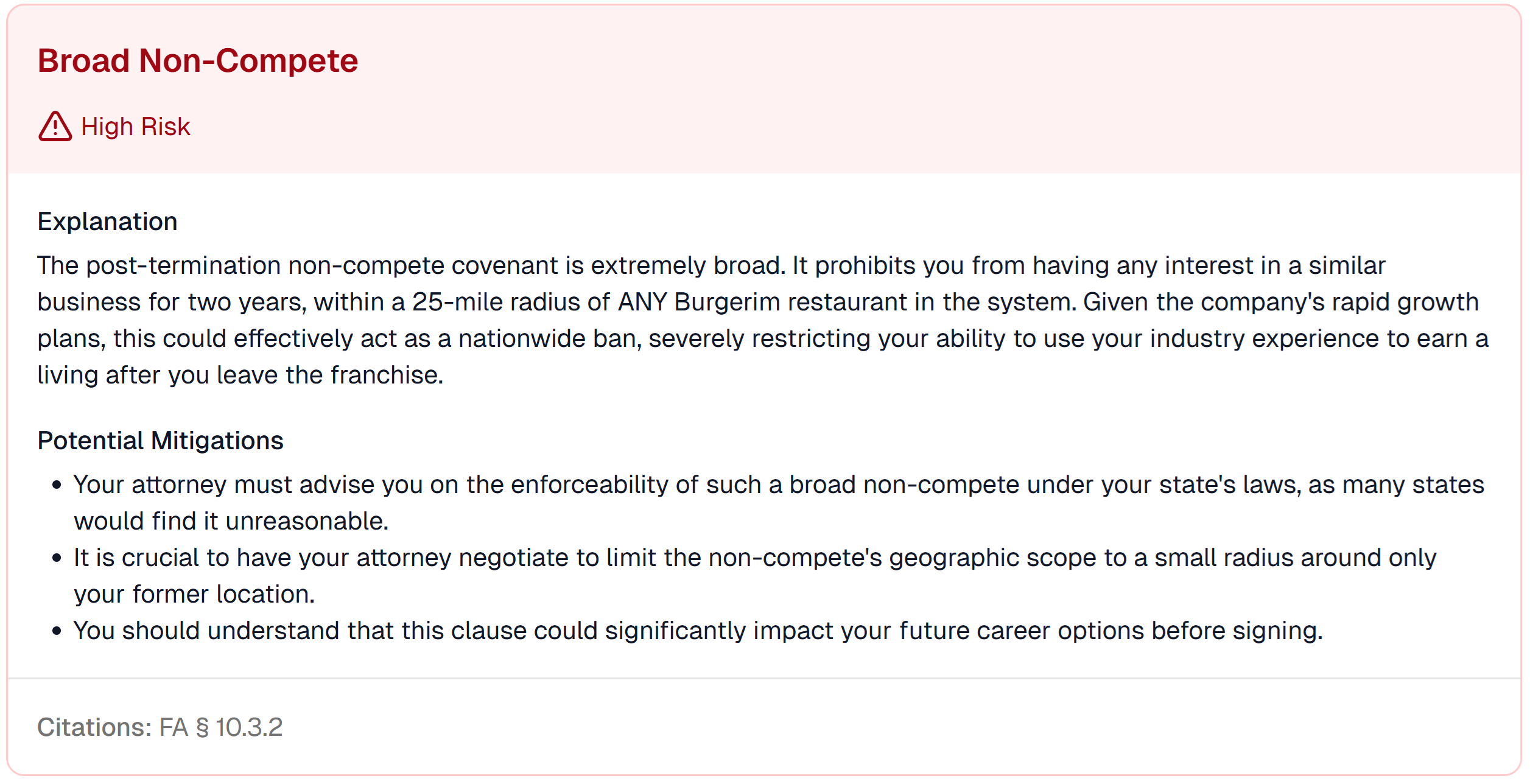
Explanation: The post-termination non-compete covenant is extremely broad. It prohibits you from having any interest in a similar business for two years, within a 25-mile radius of ANY Burgerim restaurant in the system. Given the company's rapid growth plans, this could effectively act as a nationwide ban.
Mitigation: It is crucial to have your attorney negotiate to limit the non-compete's geographic scope to a small radius around only your former location.
Avoiding a House of Cards
The Burgerim tragedy impacted 1,550 families, many of whom lost their life savings. It stands as a powerful lesson in the critical need for comprehensive, unbiased due diligence.
The warning signs were there, but they were buried in complex documents.
Before you invest your future in a franchise, you need a clear picture of the risks. An FDD Risk Report is the essential first step to optimize your consultation with your trusted franchise professionals, turning you into a better-informed client.
Protect your investment, your family, and your future by getting an FDD Risk Report.